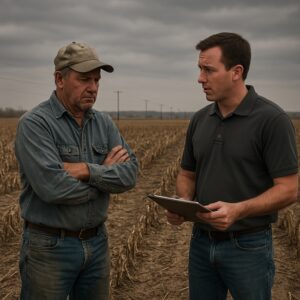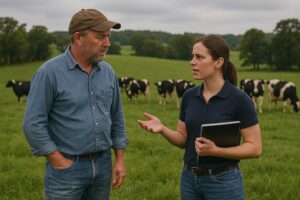Giraffes must have really long tongues!
The road trip from Wisconsin to Panama City Beach is roughly twenty-one hours and can be everything from interesting to boring. The annual family vacation was in full swing as we headed down the highway, some twenty years ago. Twelve hours into the trip, we had laughed, sang, fought, zoned out in silence for several hours and watched three Disney videos. During one of those moments of zoning out, my 5-year-old kid blurted out, “I bet giraffes have really long tongues!” At first, we almost didn’t acknowledge it. Then we laughed for a bit, but wanted to know why the comment was even made. The child explained that with a really long neck, giraffes must have really long tongues. I have to admit, up until that point in time, I had seen many giraffes but never once thought about the mechanics of how their neck worked. Like everyone else, I just looked at them and thought they were interesting to look at. I never thought about how long their esophagus is or the saliva process that has to occur for them to get forage through that long neck. I was actually selling feed to a zoo and one of my products was a forage pellet that the giraffes ate. I was in the business of knowing how they ate and digested their food, yet I never thought about their neck. It took my 5-year-old to point something out that I had looked at for 35 years but never wondered about.
How many times do you make a farm call and see something unusual or “not right” and fail to ask? How many times do we see something at our customer’s business so many times that we just think “That’s just the way it is.” We never stop to ask, Why.
Well, why does this happen? Maybe out of necessity. Kids have time to think and they have less “input” into their minds. We have responsibilities, stress, work, family matters. Our minds are busy as adults and we have to become skilled at mentally sorting through all the information flying at us. To survive, we learn to ignore what we decide is unimportant. We have to focus on the most important pieces of information or we could not get our jobs done or bills paid or the house repaired, etc.
How do we change this pattern? And more importantly, how do we use it to sell better? Learn to think and act like a 5-year-old. It takes some reprogramming of our mind, but it’s worth it.
Kids: The Original Six Sigma Black Belts
In Six Sigma training, we are taught to ask 5 Why’s to get down to the root cause of any problem. Simon Sinek tells us to “Start with Why”. Kids come by this curiosity naturally. As a parent, we are often quizzed by our 5-year old with the famous series of questions that start with “Why” and end with our final answer of “Because I said so, that’s why!” Your kid has now arrived at the root cause (or reason) that you will not allow them to do something. During Six Sigma training, we have to relearn this skill. As an adult, this inquisitive skill is out of practice. We get into our jobs and we want to get along. So, we accept the status quo. After all, “That’s how we have always done it.” It usually takes a summer intern or the new person in our company to ask “Why”. Learning to apply this skill with our customer is equally useful. Our customer has processes or beliefs on how to do things. “I never sell any grain until it’s in the bin” WHY? “We never use any of that FuFu dust” WHY? And What do you consider Fufu dust?
Obviously, you need to ask “Why” respectfully and in a conversational manner or you come off sounding like an interrogator. You can also sound like you are condemning the way they are doing something. So, ask the question and explain why you are asking. Such as, “Why do feed that supplement in the grower phase and not in the starter phase? The reason I ask is that so many people I know are feeding it in the starter phase.” Without this small qualifier, it can sound like you think he is feeding it wrong.
Spend a few minutes in your pre-call planning to think about the customer and their operation. What is different about them and WHY is it that way? Another way of asking why is, “How long have you done it that way?” This leads to an explanation of how they arrived at doing it that way and why? During your farm call, while walking the cows or walking the fields, take a minute to observe what is unique to this farm and ask about it.
Failing is Part of their Journey
From learning to walk to learning to talk, kids bounce back from failure on their journey. They strive to be just like the bigger kids – walking, riding a bike and swimming. Despite numerous falls, scrapes and bruises, they persist until they can ride their bike down the street just like their friends. What kid wants to be stuck in the shallow end of the pool, not knowing how to swim? None. They do what it takes to learn how to swim like their friends. It might be scary. The other kids might laugh at their inabilities. But, quitting and staying in the shallow end of the pool is not an option. They get over their fears and their pride and keep trying.
You get the point. Keep trying. You know in your heart that you and your product will help your customer. They just don’t see it yet. Keep trying and keep bringing new methods to your approach. Get over your fears and your pride and keep trying. Eventually, it will become apparent to your customer that you are the best option.
Fresh Eyes on You
When our kids are first exposed to new ideas, they provide a fresh set of eyes on the routine activities in our lives. Take a sales lesson from your kids and get a fresh look at what you do as a sales person. Why do I go see these customers every week? And what would happen if I changed my routine? Why do my best customers buy from me? And how can I be even better at it? Why do my best prospects not buy from me? And how can I mitigate that reason? Why do I continually get stuck in a price discussion with this particular customer? And, how can I get out of it?
Some suggestions on how to get fresh eyes:
- Go on a ride along with another sales person. Preferably, ride with someone who has a similar customer base. This is a great way to get insight into alternative ways to do your job.
- Have another sales person ride along with you.
- Sit down with your sales manager and review your territory and territory management process.
- Ask your sales manager to ride along with you to get a firsthand look at what and why you do what you do.
- Might I suggest hiring a coach? Email me as I know a great one.
- Network with sales people outside of your industry. Look for similar sales processes though: Long term customer sales are different than one-and-done type sales.
Sorry to say, we never did figure out the length of a giraffe’s tongue, but it has provided much enjoyment for our family discussions over the 20 years since that trip. I just hope we never stop making those type of observations and wondering Why.
Make your next meeting memorable by bringing in a speaker who’s been there. Contact me to find out how Greg@GregMartinelli.net
For more Ag Sales Training, Ag Sales Coaching and Leading Ag Sales Teams, go to
http://www.GregMartinelli.net/
Webinar Series
You know about Precision Farming!
Now there is Precision Sales Training!
Contact me about customized webinars for your team or enjoy one of the prerecorded webinars
Quick one-hour webinars on the most critical areas you need to grow your selling skills. Price Resistance, Cold Calling, Prospecting and Asking High Value Questions are currently available. Get access to the recorded webinar and listen as often and whenever it fits your schedule.
Click on the link below!




